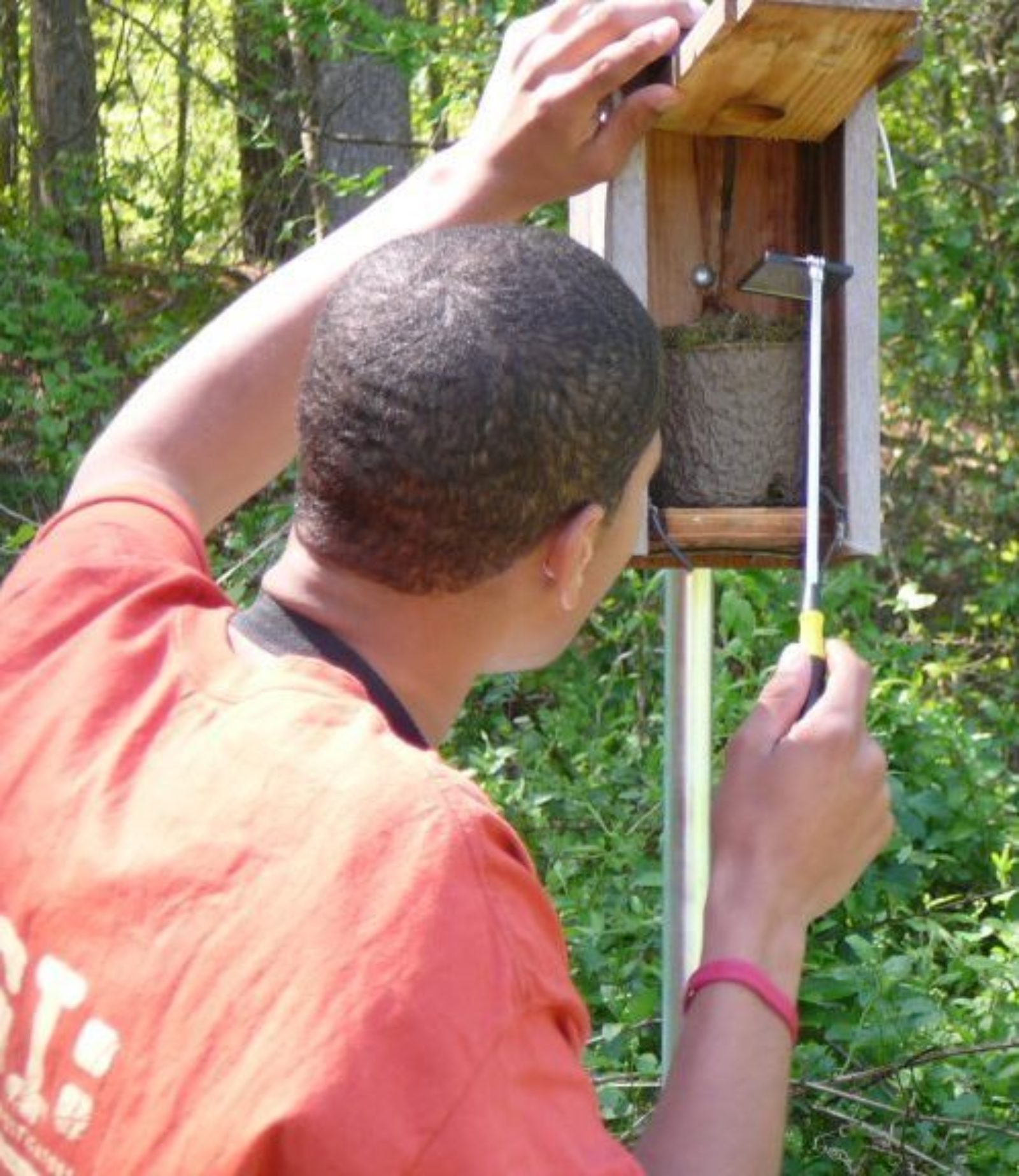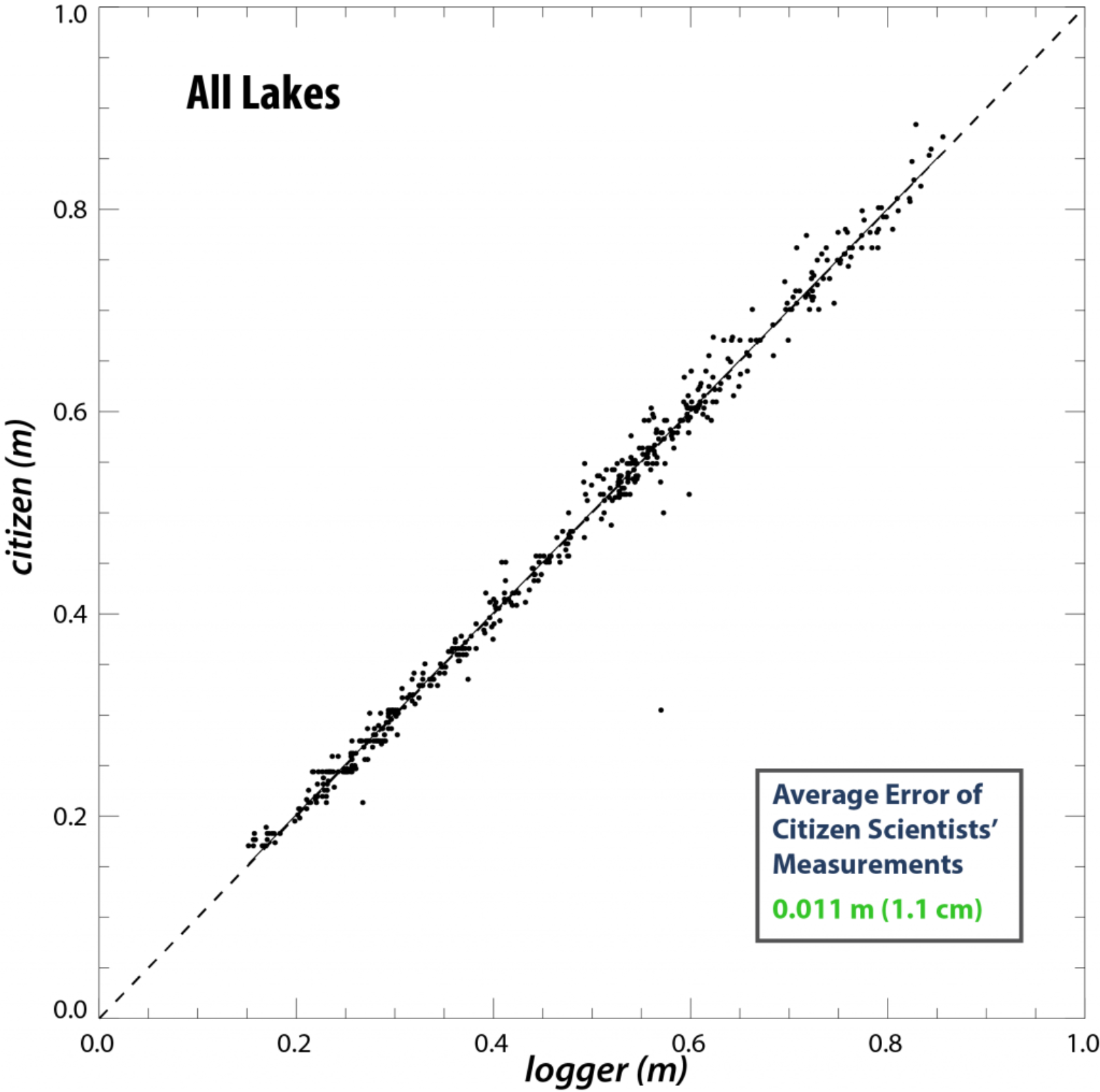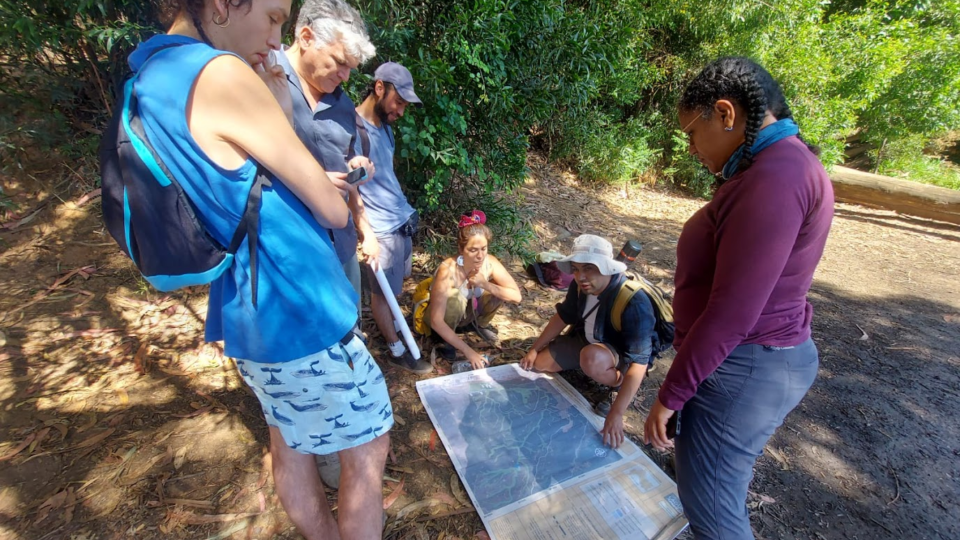Can Citizen Scientists Provide Accurate Data?
 Participants in the citizen science project Nestwatch check on active bird nests 2-3 times a week to monitor their progress. Photo courtesy of NC Museum of Natural Sciences.
Participants in the citizen science project Nestwatch check on active bird nests 2-3 times a week to monitor their progress. Photo courtesy of NC Museum of Natural Sciences.
You may have heard the term “citizen science” in other places as well, as this type of research has grown in popularity in the last 5-10 years. The Citizen Science Association defines citizen science as “the involvement of the public in scientific research – whether community-driven research or global investigations”. The basic premise is that citizen science brings researchers and non-scientists together to answer a research question, deliberately involving the public in some aspect of authentic scientific research. And along the way, the public learns more about the process of doing science.
These projects get started in a variety of ways – most often, as in our case, with scientists asking a research question, then engaging the public to contribute their efforts to the research process through data collection or data analysis. Project FeederWatch, Galaxy Zoo and the NC Candid Critters project are also examples of this type of project. Using people power, scientists are able to collect more data in more places at low, or no, cost. At the same time, they are providing volunteers with a way to make a significant contribution to science.
The Lake Level Monitoring Project (LLMP) is a citizen science project because our lake height measurements are being provided by people who are generally not trained as hydrologists. Some of these citizen scientists have been taught how to read a lake gauge by project staff, while others simply read instructions posted on a sign above the gauge. Whether they have been trained by project staff or not, they are citizen scientists.
A question that often arises within the research world is whether or not citizen scientists are able to contribute data that is accurate. To answer this question in the context of our project, we developed a way to test the accuracy of each lake height measurement submitted by citizen scientists. When we installed lake gauges in lakes in eastern North Carolina, we also installed automatic lake level loggers that could record lake height every 15 minutes. We left them in the lakes for several months, and then compared each lake height measurement submitted by a citizen scientist with the lake height measured by the automatic lake level logger at the same time.
The figure below shows what we found. On it, each dot represents a lake’s height at a specific date and time. Its location within the square is determined by what the citizen scientist reported the lake height to be, and what the level logger reported the lake height to be. If the citizen scientist reports a lake height that is exactly the same as the level logger, the dot would be placed exactly on the diagonal line. So, the closer a dot is to the diagonal line, the more accurate the citizen scientist’s measurement.
 Comparison of lake height measurements from citizen scientists and automatic level loggers. Results suggest that citizen scientists usually measure lake stage with high accuracy.
Comparison of lake height measurements from citizen scientists and automatic level loggers. Results suggest that citizen scientists usually measure lake stage with high accuracy.
When we look at all of the lake heights submitted by citizen scientists, we see that the average error was just 1.1 cm (less than 1/2 inch). This is considered extremely accurate, and comparable to the accuracy of automatic level loggers, which have an error of 1.0 cm. So, we have found that citizen scientists are able to provide high quality, accurate lake height measurements.
But if we can install an automatic lake level logger in a lake, then why do we need citizen scientists?
Citizen scientists are critical to the Lake Level Monitoring Project for several reasons. First, the loggers and other equipment needed to automatically measure lake height can cost $700 or more per lake. Although the LLMP is only studying a few lakes in eastern North Carolina right now, we hope to expand to several hundred lakes across the globe in the coming years, so using automatic level loggers in all of those lakes just isn’t possible.
A second reason we work with citizen scientists is because we believe it is important to engage the public in this work. The citizen scientists who participate in this project have deep connections with these lakes, which are an integral part of the cultural history of eastern North Carolina. Most citizen scientists live very close to the lakes, and many use them for boating, swimming and fishing. When surveyed, 92% of our citizen scientists said they participate in the LLMP because they want to “contribute to scientific research”, and 72% said they wanted to “learn more about the lake”.
We have found that engaging citizen scientists in the Lake Level Monitoring Project is a great way to achieve the goals of both the researchers and the citizen scientists.
LOCSS News
We share stories about the lakes in our study, our partners and volunteer citizen scientists, as well as interesting results from our research.





